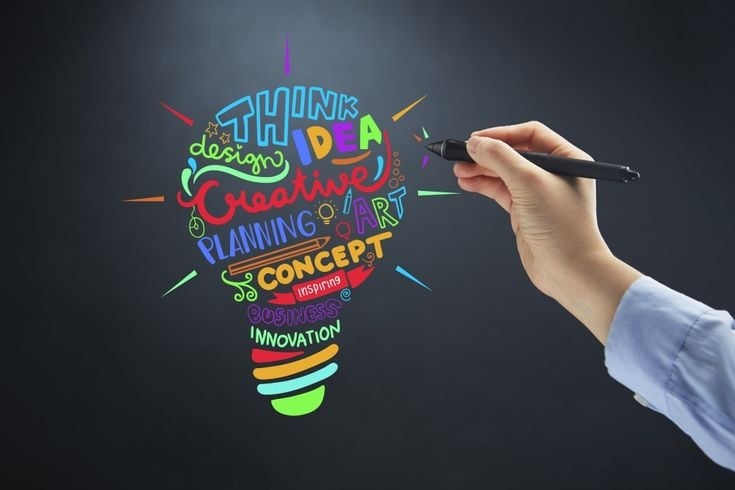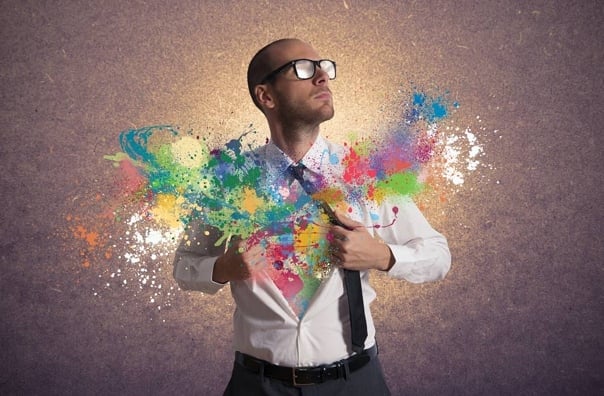According to linguistic dictionaries, creativity is the capacity to generate original, practical ideas, but it goes beyond that. Whether it's sorting through all the dirty dishes in the already full dishwasher or selecting what to wear after putting off doing the laundry for another week, we all use it daily. However, artists who have always been unique also possess creativity, from sculptors and painters who lived in the 14th century to musicians and singers today.
Numerous research studies on techniques to improve creativity have been carried out. According to the research, you should drink tea, choose a chaotic workspace, or work in a busy café so you can hear people murmuring. However, these are only band-aid fixes; they won't turn you into a naturally gifted creative thinker where the magic and secret are found.
What Makes Some People More Creative Than Others?
According to a Harvard University study released in early 2019, people who work in creative fields use different brain networks for different tasks. During the experiment, researchers found that exceptional creative processes simultaneously activated brain systems that usually work independently.
For example, the "default network" usually activates when we think automatically, such as daydreaming, thinking back on the past, imagining the future, or allowing our minds to wander without concentrating on a particular objective.
However, the "executive control network" is activated, stopping the "default network" activity when you must pay attention and concentrate on a particular task.
Experimental results revealed that the "default network" and the "executive control network" were both active simultaneously in creative thinkers. In contrast, each network was activated separately in less creative thinkers based on functional magnetic resonance imaging (fMRI) data.
In summary, creative people can simultaneously activate brain regions that don't normally work together, allowing them to manifest their creative visions.
So, how do creative professionals accomplish this? Are there any common rituals they follow to strengthen these brain systems? To discover the answer, we spoke to several artists about how they access and enhance the creative process.
Glass painting artist Anna Curnes states, “I draw inspiration for all my work either from a feeling I want to share with people or a vision that forms in my mind of how the painting will look after completion and the emotions I hope it will evoke.” Working with hot glass requires precision, patience, and sometimes acknowledging that the glass has its own "opinion" on what you will do with it.
Curnes adopts a different approach, focusing on merging art with reality rather than worrying about bringing her "big idea" to life. She finds that creative inspiration emerges naturally when she looks beyond beauty and adventure and appreciates “the little things that give life its randomness and wonder.”

“I feel that creativity revolves around attracting an intangible spark of magic and transforming it into a tangible form in whatever shape it takes,” says Curnes, explaining that inspiration is present everywhere. Curnes prefers working in a "distracting" atmosphere and sees it as an ideal work environment to enhance her creativity. She works with three other glassblowing artists who alternately play upbeat music and have lively conversations to keep the creative spark alive.
Conversely, other artists like electronic music artist and music producer Paige approach their craft more methodically. Paige states, “In a competitive field, the secret to success lies in creating a list of specific things that help you access your exceptional creative power. For me, there are specific things I must do to create the best possible music.”
This includes various things, from ensuring an adequate amount of sleep to having a morning cup of coffee or listening to uplifting music or self-improvement podcasts while strolling through the neighbourhood. This helps him enjoy relaxation, inspiration, and vitality and enhances his creativity.
Additionally, he takes a quick break outside or in an area with natural light when his performance falters because dark rooms negatively affect his creativity.
This routine appears effective for him, as his new "Land Down Under" cover has gained twelve million views and continues to increase steadily.
Illustrator Holly Hatam follows a morning routine consistently. She created the illustrations for the New York Times newspaper's best-selling book Dear Girl. “My creativity does not flow smoothly when a day goes by without following this routine,” she states.
Hatam wakes up around 5:30 am daily, meditates, and writes in her gratitude journal with a cup of tea.
However, Paige stresses that “there is no one-size-fits-all routine; the key is to figure out what activities help you be the best version of yourself and figure out how to work them into your day or week because that's when your creativity reaches its peak.”
Architect and founder of DMAC Architecture, Dwayne MacEwen, presents a similar theory about creativity, stating that “your confidence in the creative process itself holds the secret, not tricks up your sleeve.”
MacEwen should constantly be mindful of his surroundings and alert since his creativity can sometimes manifest spontaneously and momentarily. However, this does not imply that you must wait for inspiration to “come down on you.” “It rewards me with brilliant and innovative solutions when I am willing to put in effort and trust in the creative process—sitting down, drawing, and immersing myself fully in the project,” he says.
Is There a Specific Thing That Sparks Creativity?
Perhaps the secret lies in avoiding certain things, like sitting in a dark room, as Paige suggested. Many artists interviewed put their phones on silent mode, do not check emails, and eliminate any distractions that might keep them from finishing the tasks at hand.
For a better example of this concept, consider the words of abstract muralist Colton Seager, “Art should not revolve around the 'number of likes' paintings receive, or the number of followers I will gain through working on them, or the money I will earn from selling them, or even if people will like them. For me, the most crucial part of the creative process is ensuring that my work is authentically me, even though these ideas are very alluring.”
While everyone acknowledges that art is deeply personal, there appears to be some consistency in the value of creativity, at least among artists, those who characterise the creative process as "inspiring" and "surprising," whether in other artistic mediums or in nature.
Ultimately, a lot of people refer to creativity as a lifestyle.
According to author Heddi Goodrich, “Creativity is not something that only belongs to artists; it is a part of everything that surrounds us, stemming from the Creator's creativity from the great cosmic explosion that created galaxies and the flow of life from the life womb. Also, it is the essence of humanity and what propels us to carry on and advance.”

Goodrich found her creative inspiration in what some people might consider just a routine activity, which is speaking another language. After realising that writing in Italian was the only way to evoke that unique creative flow, she wrote her first novel, Lost in the Spanish Quarter, entirely in that language. “It is the place where I generate amazing sentences, as though they originate from somewhere beyond myself, and all I need to do is record them,” she said.
The idea that creative work manifests itself to you rather than being imagined from scratch has also been expressed by many others. Though ideas may strike randomly, you can capture them by taking notes on your phone before they disappear.
Elizabeth Gilbert, the author of Eat, Pray, Love, discussed this emotion in a 2009 TED Talk, joking that she asks the ideas that come to her while trying to sleep to come back to her tomorrow.
These creative professionals all agree that creativity is not tangible; rather, they see it as an extension of themselves, similar to glasses that improve vision, rather than a button you can press to activate or deactivate at will. This is true even though they all employ very different methods to achieve the highest levels of their artistic creativity and output. Maybe this explains why their brain networks never shut down.
As the painter Michelangelo famously said, “I saw the angel in the marble and carved until I set him free.” The key to accessing your creativity may simply be surrendering to it until the magical recipe for entering that world with its widest doors unfolds before you. As a result, it may not seem like there is a specific secret or elixir that helps you spark your creativity, but this is exactly what sets it apart.






Add comment